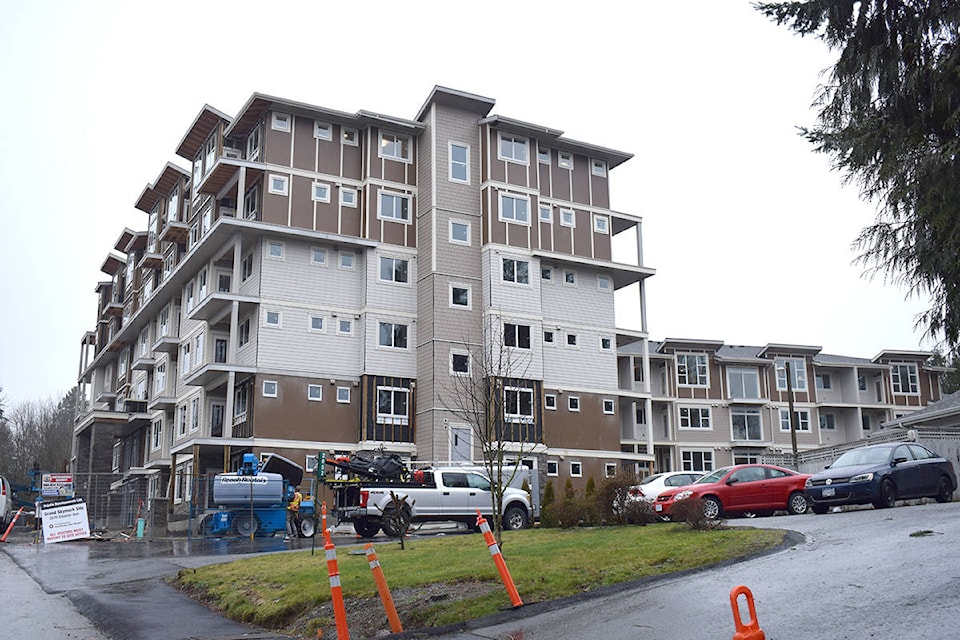The rental landscape remains tight in Abbotsford despite record levels of building.
New figures from the Canadian Mortgage and Housing Corporation (CMHC) show Abbotsford’s rental vacancy rate has improved slightly but remains historically low, while rents have continued to rise.
The new statistics come as the city plots a new affordable-housing strategy and awaits the federal government’s decision on whether to place Abbotsford in a special group of municipalities that receive money to combat homelessness.
For Mayor Henry Braun, the central issue is simple: the Fraser Valley, and all of the Lower Mainland, needs more homes.
“We’re not building enough housing,” he said Wednesday. “This isn’t a demand issue. It’s a supply one.”
The vacancy rate in the city’s purpose-built rental apartments was 1.3 per cent as of last October, according to the CMHC. That’s up from 0.8 per cent in 2018 and 0.2 per cent in 2017.
But prior to 2015, the rate had never dipped below 1.9 per cent.
The demand also continues to push the cost of renting a unit upwards: prices for the same apartments climbed nearly five per cent last year and 7.6 per cent the year before.
More than 600 rental apartment units have been finished over the last two years. But CMHC figures show demand is increasing nearly as fast.
“We’ve had three record years of building and we’ve only made a dent in our vacancy rate,” Braun said.
RELATED: As rents rise, Abbotsford families face hard decisions
RELATED: Building boom churning out hundreds of new apartments in Abbotsford
A report for the city outlines the challenges facing renters. Traditionally, the CMHC considers housing “unaffordable” when it consumes more than 30 per cent of a household’s income.
By that definition, only those making more than $150,000 can afford to buy a house. Townhomes are only possible for those with household incomes above $100,000, and condos are only feasible for families making in excess of $60,000 a year.
About 41 per cent of households make less than that and can only rent. For a quarter of Abbotsford’s households, even market rentals have become unaffordable.
While Braun suggests that the definition of affordability has probably changed and that people of all stripes are spending more than one-third of their earnings on homes, he says that inevitably requires residents to make sacrifices just to keep a roof over their heads.
“There are tradeoffs that people are making,” he said. “People give up certain things because you need housing.”
On Monday, council got a look at the draft of the city’s new affordable-housing strategy. The document lays out a plan to try to foster the building of more homes that can address the shortfall – particularly for those whose budgets have been most affected by the increasing cost of housing.
The strategy has been in the works for years and includes recommendations for more surveys, assessments and plans. But it will also influence, and be influenced by, policies that could take effect as soon as this year, Braun says.
The city already exempts builders of small apartment units from having to pay development cost charges that cover municipal infrastructure costs, and, on Monday, Coun. Bruce Banman suggested the city could adjust the threshold at which a development qualifies for such exemptions.
Braun seconded the idea – although it will be a delicate task to strike the right balance: If the threshold is set too high, the city could find itself subsidizing many large development projects; if it remains too low, the exemption won’t sufficiently incentivize developers to break ground on buildings pitched at low-income people.
The city is also working on a new zoning bylaw and “bonus density” provisions. The former could see parking and other rules relaxed to encourage home-building; the latter could allow developers to build denser projects if they provide certain community benefits, like the inclusion of subsidized or supportive housing within.
The strategy may also prompt the city to look at its own inventory of properties around Abbotsford.
“I’ve looked at some of the inventory of little pieces of land that we have here, there and everywhere,” Braun said.
“Some of it is connected, but some of it, we’re missing one lot. So there’s an argument to be made that the city should buy that lot and consolidate it with the other two, and now you can put 40 units of low-income housing.
“We wouldn’t build the building, but we might enter into a lease with BC Housing for 60 years and say, if you spend $3 million or $4 million and build that project, we’ll put the land up.”
Braun says the new document will also be used to lobby the federal and provincial government for more support, and for programs that could incentivize large investors to park their money in rental projects.
Do you have something to add to this story, or something else we should report on? Email:
tolsen@abbynews.com
